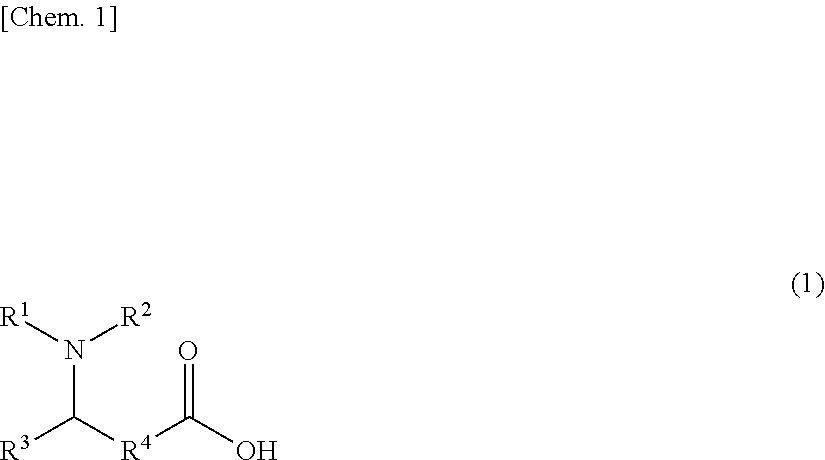Method for producing surface-modified metal oxide fine particle, method for producing improved metal oxide fine particles, surface-modified metal oxide fine particles, and metal oxide fine particle dispersion liquid
- Summary
- Abstract
- Description
- Claims
- Application Information
AI Technical Summary
Benefits of technology
Problems solved by technology
Method used
Image
Examples
example 1
[0691]Firstly, 782 parts by mass of solution of zirconium 2-ethylhexanoate in mineral spirit (manufactured by Daiichi Kigenso Kagaku Kogyo Co., Ltd., concentration of zirconium 2-ethylhexanoate: 44% by mass) and 268 parts by mass of pure water were mixed with each other. The resulting mixture solution was charged into an autoclave. The atmosphere in the autoclave was substituted with nitrogen gas, and then, the mixture solution was heated to 180° C. with stirring. The stirring was continued at the same temperature for 16 hours. After completion of stirring, a solid inside the autoclave was collected by filtration. The collected solid was washed with acetone, and then dried. Then, 100 parts by mass of the dried solid was dispersed in 800 mL of toluene, resulting in a cloudy solution. The cloudy solution was filtered through a filter paper (No. 5C) to remove large particles. Toluene was sufficiently removed by evaporation from the filtrate using a rotary evaporator to obtain dried whi...
example 2
[0700]Coating treatment of zirconium oxide fine particles was carried out using carboxylic acid compound (CA1) in the same manner as in Example 1 except that methyl ethyl ketone was changed to propylene glycol monomethyl ether. As in Example 1, the collected zirconium oxide was a viscous liquid in a starch syrup state. The change in properties shows that the coating agent adheres to the surface of zirconium oxide.
[0701]The obtained surface-modified zirconium oxide in a starch syrup state was used and evaluated for the dispersion stability as in Example 1. In evaluation of the dispersion stability in an organic solvent, when the metal oxide fine particle dispersion liquid was allowed to stand still at ordinary temperature for 30 days, the zirconium oxide fine particles remained dispersed stably. When the obtained metal oxide fine particle dispersion liquid was subsequently allowed to stand still for 60 days (total 90 days) at ordinary temperature, aggregation of zirconium oxide fine ...
example 3
[0702]A mixed solution was obtained by mixing 50 parts by mass of dried white zirconium oxide fine particles and 50 parts by mass of 5% by mass aqueous solution of sodium hydroxide, and the obtained mixed solution and 10 parts by mass of carboxylic acid compound (CA1) were added to 50 parts by mass of propylene glycol monomethyl ether. Then, the zirconium oxide fine particles in propylene glycol monomethyl ether was stirred for 10 minutes, and the surface of the zirconium oxide fine particles was coated with carboxylic acid compound (CA1). From the liquid after stirring, propylene glycol monomethyl ether and water were sufficiently removed by evaporation using a rotary evaporator to collect zirconium oxide. The collected zirconium oxide was a viscous liquid in a starch syrup state. The change in properties shows that the coating agent adheres to the surface of zirconium oxide.
[0703]The obtained surface-modified zirconium oxide in a starch syrup state was used and evaluated for the d...
PUM
| Property | Measurement | Unit |
|---|---|---|
| Mass | aaaaa | aaaaa |
| Stability | aaaaa | aaaaa |
Abstract
Description
Claims
Application Information
 Login to View More
Login to View More - R&D
- Intellectual Property
- Life Sciences
- Materials
- Tech Scout
- Unparalleled Data Quality
- Higher Quality Content
- 60% Fewer Hallucinations
Browse by: Latest US Patents, China's latest patents, Technical Efficacy Thesaurus, Application Domain, Technology Topic, Popular Technical Reports.
© 2025 PatSnap. All rights reserved.Legal|Privacy policy|Modern Slavery Act Transparency Statement|Sitemap|About US| Contact US: help@patsnap.com



